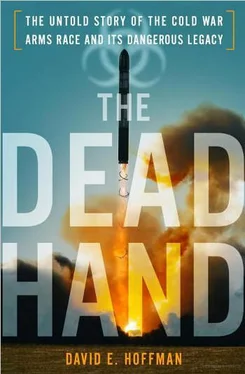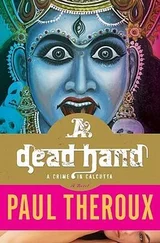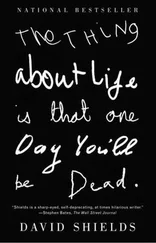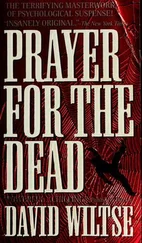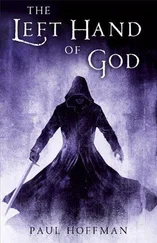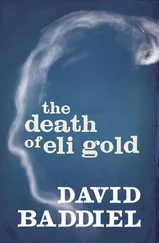On another point in the speech in San Francisco, Gates warned that the Soviet Union was “laying the foundation” for a nationwide missile defense system, which would be prohibited by the treaty, and pursuing advanced technology to do it, such as laser, particle beam, kinetic energy and microwave electronics. This argument was often made by U.S. officials to build support for the Strategic Defense Initiative. But it was hype. Katayev wrote in his spravka the Soviets were in fact way behind the level of technology suggested by Gates. The alarmist charges were greatly exaggerated. The most advanced Soviet research on laser and other exotic technology “are at the initial stage of laboratory stand experiments,” he said. Prototypes of such weapons could not be created any sooner than the year 2000. The Soviets were unable to shoot down anything with a laser. 17
Another important voice for glasnost , and against the long tradition of military secrecy, was Velikhov, the open-minded physicist and adviser to Gorbachev. In January 1987, four weeks after Katayev’s spravka , Velikhov came up with an idea. He wrote to the Central Committee defense department—Katayev’s office—proposing to challenge the misleading American statements about Soviet laser weapons. A showcase nuclear disarmament conference was scheduled for later in the month in Moscow, and Velikhov was one of the organizers. Scientists, celebrities and antinuclear activists were being brought in from all around the world. Velikhov suggested: what if Gorbachev himself announced at the conference that the Soviet Union would open up the top-secret test facility at Sary Shagan that was so often at the center of American propaganda? What if the Americans were invited to see for themselves that Gates and Soviet Military Power were wrong? Velikhov suggested that a group of five to eight American scientists and journalists be taken on a “spontaneous” four-hour visit. Contrary to American claims about the lasers, their actual power was “thousands of times less than required” for shooting down missiles, he said. “There exists a complete and unique chance to demonstrate the false nature of the official American claims,” Velikhov insisted. “An exposure of the lie with one concrete example may have big political consequences.”
Velikhov was a vice president of the Academy of Sciences, and his proposal immediately commanded the attention of top security and defense officials, including Zaikov, Akhromeyev and the head of the KGB, Viktor Chebrikov. A staff report dumped cold water on Velikhov’s idea, saying the American visitors would quickly realize the Soviet equipment was really quite old. The two lasers at the complex were experimental samples using components from the early 1970s, the staff report said. The visiting scientists and journalists might think the Soviets were insincere, or covering up something, the report added. Akhromeyev worried that the Americans—seeing the size of buildings and the nature of the test range—might try to prove that the Soviets were planning to build missile defenses in the future. There was also worry that the visitors might see a secret project called “Gamma” to build an anti-satellite weapon in the future. In fact, Gamma never materialized. The only thing to hide at Sary Shagan was the painful truth: Soviet technology was way behind.
On February 12, the Central Committee answered Velikhov: proposal rejected. No Americans could see the secret test range. But Velikhov had opened the door a crack, and did not give up.
Another key moment in Gorbachev’s drive for change came December 16, 1986, when he telephoned Andrei Sakharov, who was watching television with his wife, Yelena Bonner. Sakharov, the 1975 Nobel Peace Prize winner and dissident physicist who had helped design the Soviet hydrogen bomb, was banished to Gorky in 1980 without trial for speaking out against the Soviet invasion of Afghanistan and Soviet human rights violations. Reagan had raised the question of Sakharov in a letter to Gorbachev delivered at the Reykjavik summit. Gorbachev did not want to seem to be under pressure, but in December he told Sakharov on the phone, “You can return to Moscow.” Sakharov stepped off the train in Moscow at the Yaroslavl station on December 23.
In February, Sakharov appeared in public for the first time since his return, attending the international disarmament conference, “The Forum for a Nuclear-Free World and the Survival of Mankind.” The conference was jam-packed with celebrities invited from around the world, but Sakharov’s presence cast a special glow. Even more significant was Sakharov’s message: it was time to get on with reducing dangerous missiles and break the deadlock over the Strategic Defense Initiative. It was time to crack open the Gorbachev “package” from Reykjavik. 18
Gorbachev had earlier been certain the package deal would bring results. But now, in late February 1987, the Soviet Union was preparing to set off its first nuclear explosion since the end of the moratorium. Gorbachev needed something new, and bold. Sakharov’s speech at the conference has been credited by some as pushing Gorbachev to move. But there was another strong impetus. On February 25, Gorbachev’s influential adviser, Alexander Yakovlev, wrote an extensive memo to him, arguing the time had come to unbundle the “package” and make separate deals to reduce nuclear weapons.
Yakovlev, the paragon of new thinking who had walked with Gorbachev in the orchard in Canada, said Gorbachev needed to pay attention to the political dynamics. “In politics, maximum freedom of maneuver is always valuable,” he wrote. “The ‘package’ in its present form only ties our hands.” At the top of Yakovlev’s list of priorities, if the package were dropped, was to seek a separate agreement on the intermediate-range missiles that would ease the threat posed by the American Pershing II missiles in Europe. “For us, this would be tantamount to removal of a very serious threat,” he said. Yakovlev expressed a sense of urgency. “It is extremely important now not to lose the tempo we have developed, and not to lose time. If we want to untie the package, we need to do it right now, because later the effect of it will be much weaker.” A public speech making the announcement “could compensate, in the eyes of the world public, for the fact of our reciprocal resumption of nuclear testing.” 19
If Gorbachev untied the package, it would mean the very real concessions he made at Reykjavik—such as eliminating all the Pioneers—would be pocketed by Reagan, without any slowdown in the missile defense plan. But Gorbachev also realized that, since Reykjavik, they had been treading water. His package tactic wasn’t working. Gorbachev desperately wanted to get results, not shadow-box over the future.
On the day after Yakovlev’s memo, February 26, 1987, the Soviet Union set off its first nuclear explosion since 1985, in tunnel No. 130 at the Semipalatinsk testing range in Kazakhstan. Gorbachev had absorbed Yakovlev’s argument by the time he addressed the Politburo that day. “The biggest step that would make an impression on the outside world, on public opinion, would be if we untie the package and agree to cut 1,000 of our most powerful missiles,” he said.
“Let’s untie the package.”
On February 28, he made the announcement. “The Soviet Union suggests that the problem of medium-range missiles in Europe be singled out from the package of issues, and that a separate agreement be concluded on it, and without delay.” Reagan took the news cautiously, saying it was “progress” toward a “new opportunity,” speaking to reporters in his first visit to the White House pressroom since disclosure of diversion of the Iran money to the contras two months earlier.
Читать дальше
